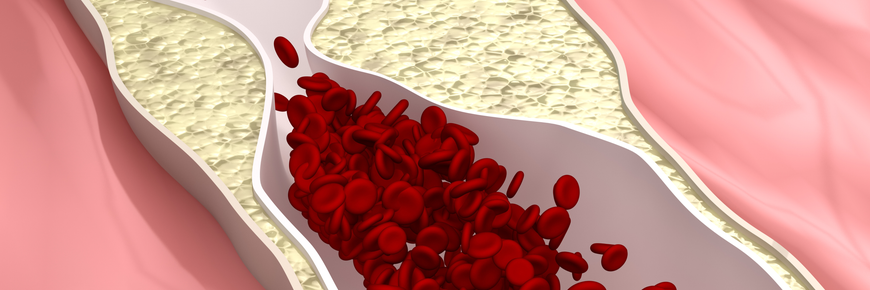
Pregnancy, the pill, a broken heart and other surprising risk factors for heart disease among women
Millions of women every year are affected by heart disease – it is the leading cause of death among women worldwide, and Australia is no exception.
In Australia, 90% of women have at least 1 risk factor of heart disease and nearly 3 times as many women die of heart disease than breast cancer.
But why is heart disease among women so common, and yet still such a mystery? The short answer is women's hearts are different and so are their risk factors for heart disease.
So how can you tell if you’re at risk and what can you do about it?
Heart Surgeon Dr Nikki Stamp spoke at the Dietitian Connection Heart Health Breakfast Symposium, here’s what she had to say:
A woman's heart is different
We know the heart is special, but what makes a woman’s heart different from a man’s? One difference we’ve discovered is how plaque builds up in the blood vessels.
When plaque develops in a man’s blood vessels, the vessels become significantly blocked, whereas when blockages occur in a woman’s blood vessels, the vessels become narrower, but blood can still flow through them. This means women respond to heart attacks differently, because the symptoms creep up over time.
What are heart attack symptoms in women?
The symptoms of a man’s heart attack are more like those we see in the movies – think crushing chest pain, whereas only half of women present ‘typical’ heart attack symptoms when experiencing a heart attack.
When having a heart attack women commonly experience non-chest symptoms such as tiredness, dizziness, breathlessness, back and shoulder pain and nausea. This can make it tricky for both women themselves and healthcare workers to determine what’s wrong. I mean who doesn’t feel tired a lot of the time!
Heart disease in women is under recognised, under diagnosed and under managed - why?
Firstly, there’s a lack of female-specific research. There’s also a lack of awareness for women. In Australia the Heart Foundation’s Making the Invisible Visible campaign aims to raise awareness of women’s heart disease, but there’s a long way to go. There’s also a lack of education for healthcare professionals and lack of women working in cardiovascular health.
What causes heart disease in women?
While the most common risk factors affecting women are high cholesterol (which is very under treated in women), being overweight and physically inactive, there are some common and surprising risk factors too:
A difficult pregnancy
Pregnancy places stresses on the body which can have a long-lasting impact. There’s an increasing amount of scientific research linking a woman’s pregnancy, or pregnancies, and her long-term health.
Women who have a difficult pregnancy may have a higher risk of heart disease later in life. If you had gestational diabetes while pregnant, it means you are at higher risk of developing type 2 diabetes in later life – this in turn increases your risk of heart attack or stroke. If you suffered pre-eclampsia – which affects approximately 3-8% of pregnancies – you’re at double the risk of having a heart attack or stroke later in life, compared to women who didn’t have pre-eclampsia.
Taking the pill
When it comes to heart health, the contraceptive pill is considered safe for most young women. However, if you are a smoker, and on the pill, it greatly increases your risks of heart disease, stroke, and blood clots. Having a family history of heart disease also adds to this risk. Discuss the risks with your doctor before being prescribed, stopping or changing a prescription for the pill.
Menopause
While heart disease can occur at any age, the risk increases around menopause (on average around the age of 52). This is thought to be mainly the result of a drop in oestrogen levels and the flow-on effects of this, along with other physiological changes, for example worsening of the lipid profile and a reduction in energy expenditure that occur at this time.
A broken heart
One condition that affects women almost exclusively is takotsubo, better known as ‘broken heart syndrome’. It’s a type of heart failure usually brought on by significant emotional or physical shock bringing on an explosion of stress hormones. More than 90% of takotsubo cases occur in post-menopausal women.
Migraines
Migraines are 3 times more common in women than men, and research has shown that if you get migraines you’re about 2 times more likely to get heart attacks or heart rhythm disorders. The link between migraines and heart disease isn’t clear, but one theory is that the same genes responsible for migraines raise the chances of heart disease.
Best tips for heart health
While heart health is a major issue, the good news is many of the risk factors can be reduced with lifestyle changes. Here are Nikki Stamp’s 5 best tips for heart health:
- Eat a heart friendly diet – the Heart Foundation recommends plenty of vegetables, fruit and wholegrains, a variety of healthy protein-rich foods healthy fats and oils – a diet similar to the Mediterranean Diet – for a heart-healthy diet.
- Get active – aim for 150 minutes of moderate intensity activity over a week (just over 20 minutes a day).
- Quit smoking – smoking greatly increases the risk of developing heart disease.
- Know your risk – all women should know the risks they face, for example their blood pressure and family history.
- Talk to those you love about heart health – if every woman told 2 or 3 women they know to be aware of their heart health, this would go a long way to protecting more women.
If you’ve reached 45, or 30 if you're of Aboriginal or Torres Strait Islander descent, you should book your Heart Health Check today.
Dr Nikki Stamp FRACS is an Australian trained cardiothoracic surgeon. She has no formal relationship with Sanitarium Health Food Company.

The latest nutrition advice, plus health and wellness tips delivered to your inbox monthly


